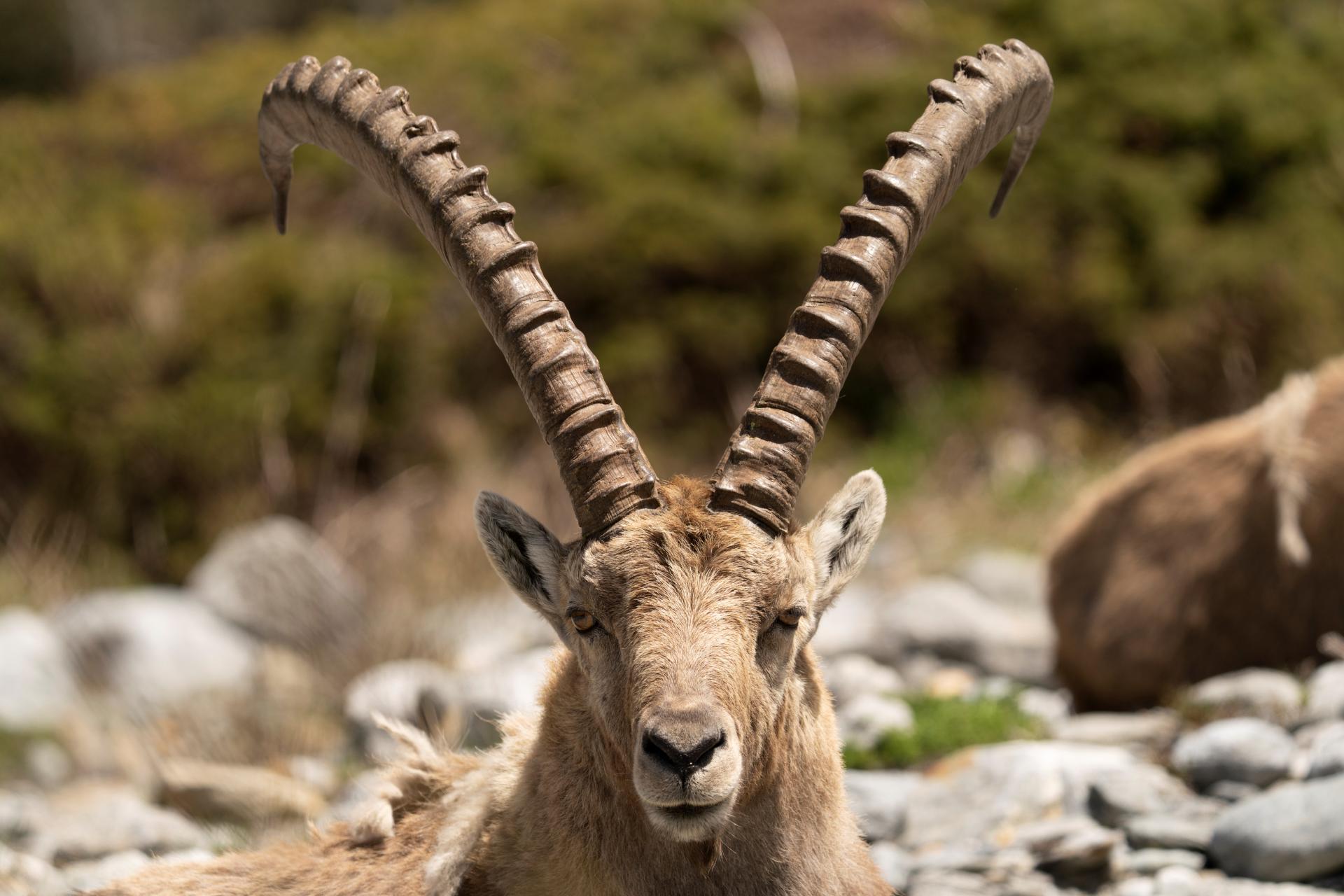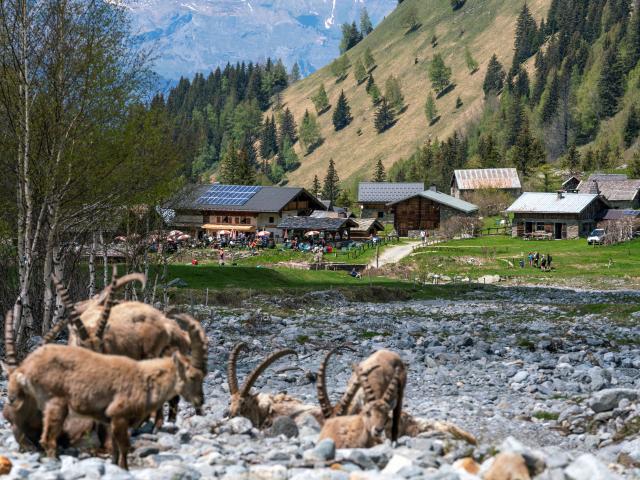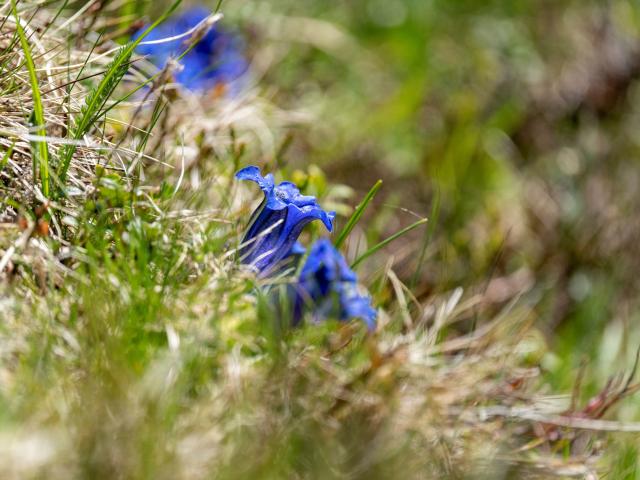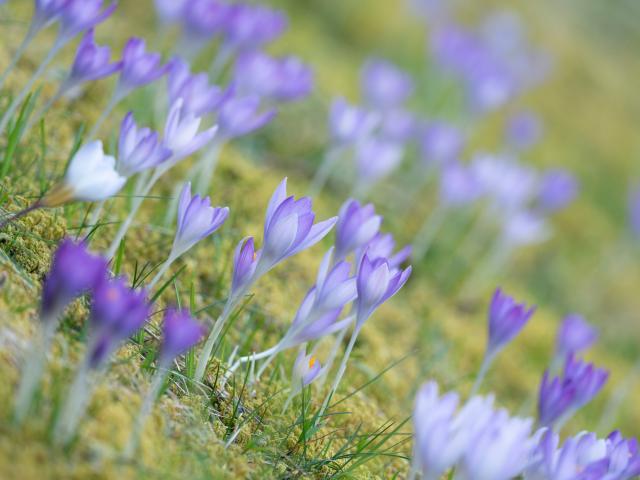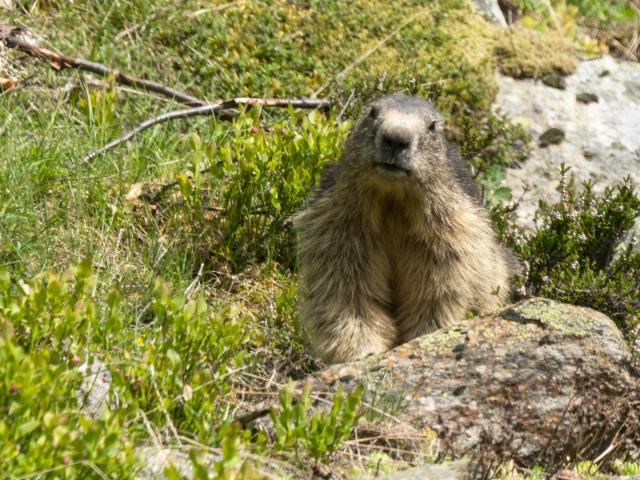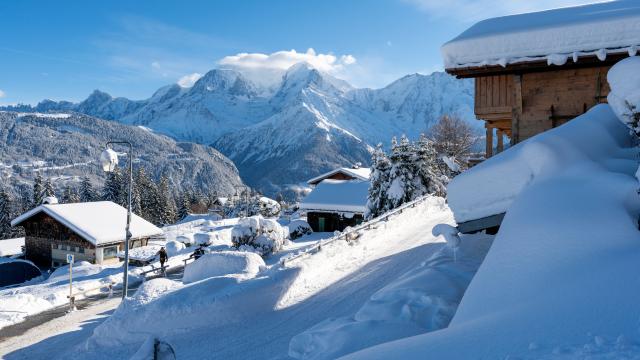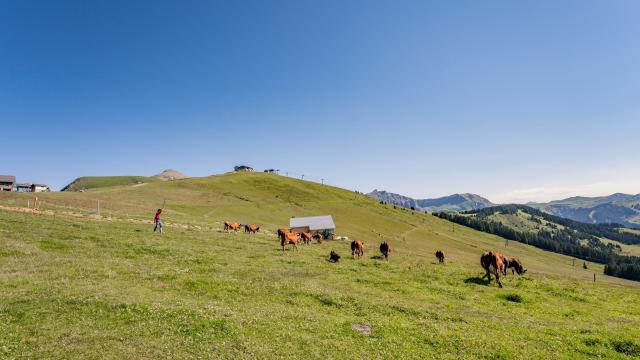Mountain wildlife
Ibex, chamois, deer, roe deer, wild boar … Many species benefit from the ideal environment offered by the generous nature of Saint-Gervais. With its varied, well-maintained forests, species such as red deer, roe deer and wild boar find a suitable environment for feeding, sheltering and breeding. Chamois and ibex, on the other hand, prefer open, craggy mountain environments, where their talent for acrobatics on the summits can be fully expressed, between rocky bars and steep slopes!
Local flora
The mountains and alpine pastures of Saint-Gervais Mont-Blanc abound with mountain flowers and plant species perfectly adapted to this extreme environment. From particularly snowy and harsh winters to sunny summers punctuated by thunderstorms, the local flora, as diverse as it is, is unanimously in tune with its environment! Whether it’s the little crocuses, the first flowers to cover the snow-covered alpine meadows in spring, or the sprigs of génépi, firmly attached to the rockys to the rocky ledges beside the Miage and Bionnassay glaciers, Saint-Gervais Mont-Blanc is the ideal place to discover its abundant and surprising mountain flora!
Gallinaceans and small mountain birds
Discreet, but very much present in our mountains, several species of Galliformes live side by side and share the different alpine floors of Saint-Gervais Mont-Blanc, from the rhododendron and bilberry-covered ski slopes to the rocky outcrops hanging over the Bionnassay moraines, via the valley’s dense, damp forests. This rich and varied mountain environment is home to the black grouse, the rock ptarmigan, the bartavelle partridge and the hazel grouse.
 Boris Molinier 5526
Boris Molinier 5526